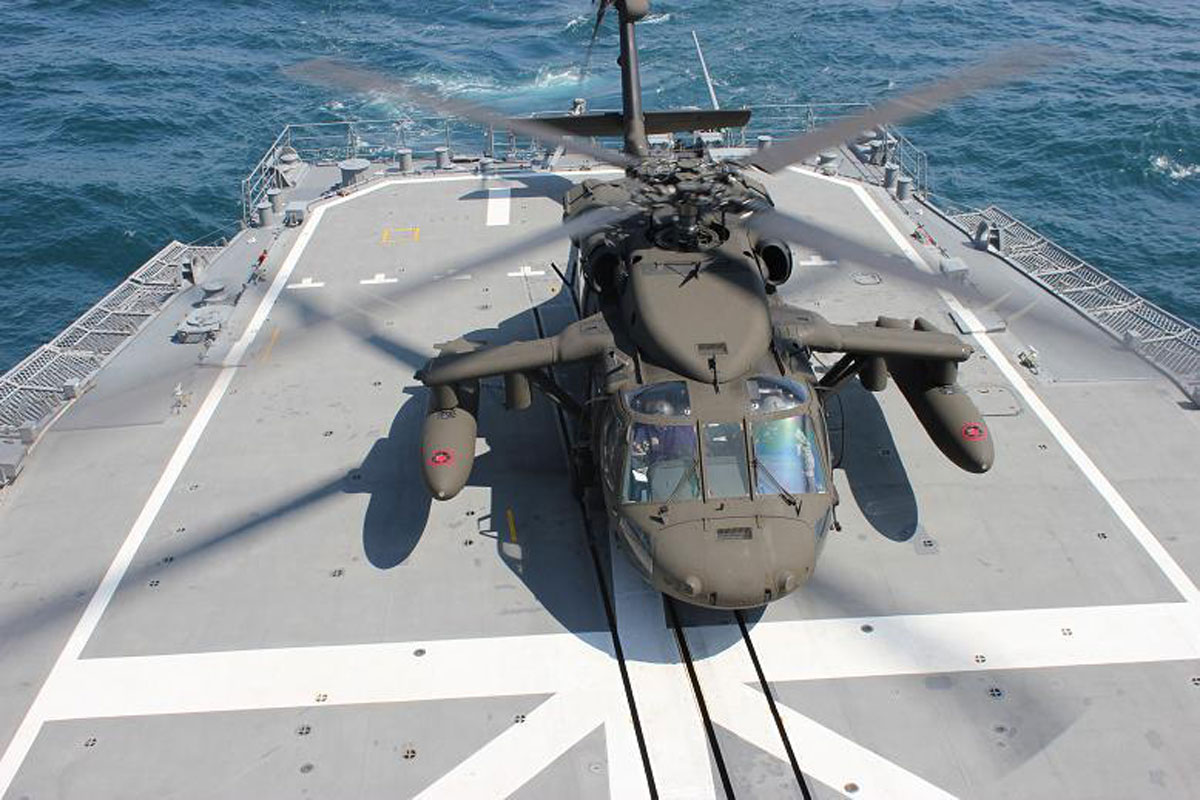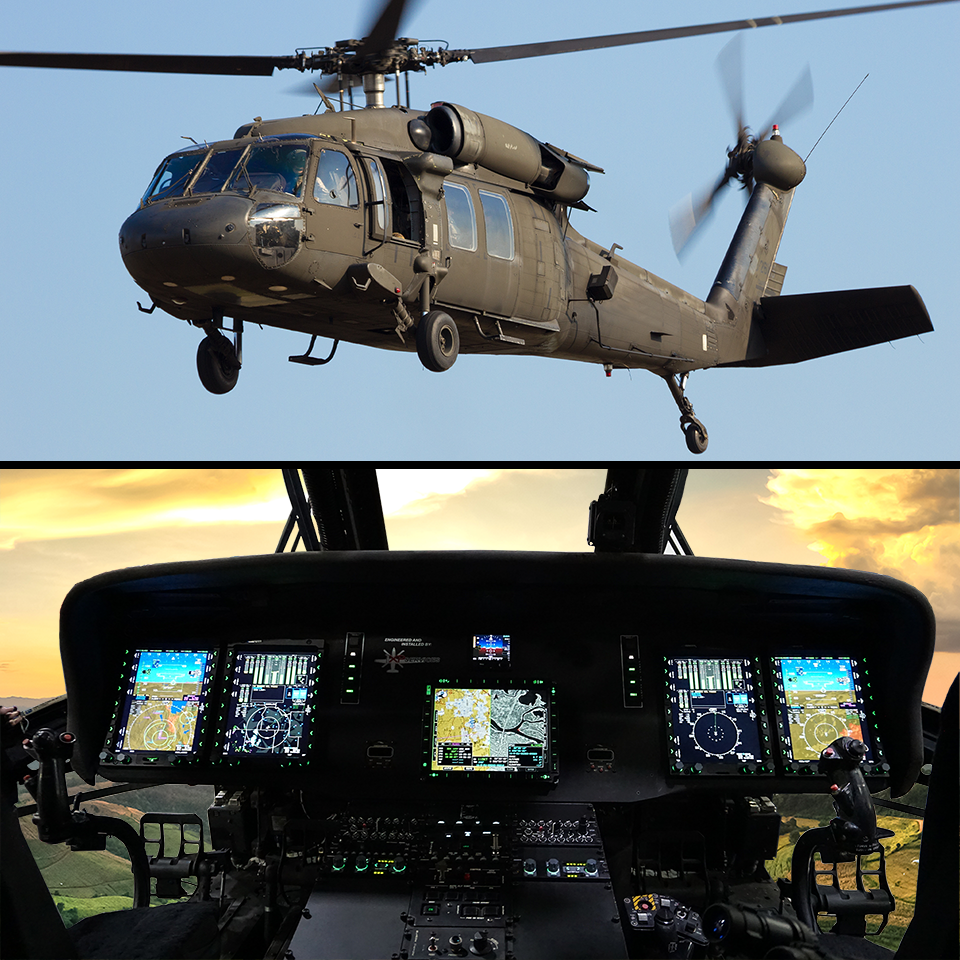The UH 60 Black Hawk: Versatility and Performance in Military Aviation
The UH 60 Black Hawk: Versatility and Performance in Military Aviation
Blog Article
Every Little Thing You Required to Understand About the UH 60 Helicopter
The UH-60 helicopter, a foundation of U.S. Army aviation given that its debut in 1979, represents an amazing mix of engineering and functional versatility. Recognized for its extraordinary speed and variety, the UH-60 has actually been adjusted for numerous missions, from army transport to clinical evacuation. As military needs develop, so too does the helicopter, with recurring innovations targeted at enhancing its capacities and integrating modern-day technologies. To completely appreciate the significance of the UH-60 in modern army operations, one have to consider its history, design, and the future innovations that might redefine its duty.
History of the UH-60
Developed in the late 1970s, the UH-60 Black Hawk helicopter became a feedback to the united state Military's demand for a versatile utility helicopter that could execute a variety of missions under challenging conditions. The catalyst for its style was the shortcomings identified in the earlier helicopters made use of throughout the Vietnam Battle, specifically in regards to speed, maneuverability, and survivability.
The Black Hawk was designed by Sikorsky Aircraft, integrating sophisticated modern technologies and products to enhance its efficiency and longevity. It was officially introduced into solution in 1979, swiftly coming to be an important possession for armed forces operations - uh 60. Its ability to transfer troops, medical evacuation, and logistical support in both combat and altruistic goals made the Black Hawk a vital element of the united state Army's air travel fleet
Throughout the decades, the UH-60 has been continuously upgraded, adjusting to the transforming nature of warfare and the progressing demands of modern-day military operations. Its operational history includes involvement in significant disputes, peacekeeping objectives, and calamity relief efforts, strengthening its credibility as a effective and reliable helicopter in various atmospheres worldwide.

Design and Requirements
The style of the UH-60 Black Hawk helicopter consistently reflects a dedication to operational effectiveness and flexibility. Developed by Sikorsky Aircraft, this medium-lift utility helicopter includes a smooth, wind resistant fuselage that improves rate and ability to move. Its tandem blades system, identified by 2 counter-rotating blades, minimizes resonance and raises lift capacity, enabling more secure operations in diverse settings.
The UH-60 is powered by 2 T700-GE-701C turboshaft engines, offering an optimum rate of approximately 180 knots and an array of around 400 nautical miles. Its durable airframe is created from advanced composite products, ensuring longevity while maintaining a relatively low weight. The helicopter has a maximum gross weight of about 22,000 pounds, sustaining a flexible haul arrangement.

Duties and Missions
A functional system, the UH-60 Black Hawk helicopter serves a wide variety of duties and missions within army procedures. Developed mostly for army transport, it can lugging up to 11 soldiers, making it a vital asset for rapid implementation and logistical assistance.
Along with army transportation, the UH-60 excels in clinical discharge (MEDEVAC) objectives, equipped with sophisticated medical tools to give vital treatment during transit. Its try here capability to run in varied environments enhances its efficiency in battle search and rescue (CSAR) procedures, where speedy extraction of personnel is crucial.
The helicopter likewise plays a significant function in reconnaissance and monitoring objectives, making use of onboard sensors and devices to debrief. Its convenience extends to logistical support, capable of moving materials and tools to onward running bases.
In fight operations, the UH-60 can be furnished with numerous weapon systems, enabling it to supply close air support. Its multi-role capacity makes the Black Hawk an essential device for modern military pressures, adjusting flawlessly to the advancing needs of battleground scenarios and ensuring goal success throughout a range of functional contexts.
Efficiency and Abilities
Recognized for its robust efficiency, the UH-60 Black Hawk helicopter boasts outstanding capacities that boost its functional effectiveness throughout numerous goals. uh 60. This multi-role aircraft is equipped with effective twin-engine Turbomeca Arriel 1D1 engines, supplying remarkable speed and maneuverability, with a maximum cruise rate of roughly 150 knots and an operational range of around 400 maritime miles
The Black Hawk's sophisticated avionics and fly-by-wire control systems substantially enhance trip safety and handling, allowing it to run in diverse atmospheres, including adverse climate conditions. Its convenience this content is additional exemplified by its capacity to carry up to 11 completely geared up soldiers or a haul of roughly 8,000 extra pounds, making it suitable for army transport, medical discharge, and logistical support goals.
Additionally, the UH-60 is created for survivability, featuring strengthened airframes, ballistic defense for team and passengers, and progressed countermeasure systems to evade risks. The helicopter's dexterity and speed, incorporated with its capacity for rapid implementation, make it an essential property in contemporary army operations, guaranteeing that it continues to be a crucial element of tactical air assistance and combat zone flexibility.
Future Developments

One substantial emphasis is the combination of innovative avionics systems, which will improve situational awareness via improved navigation and communication abilities. This consists of the potential use expert system to aid pilots in decision-making and goal planning.
In addition, future variations may incorporate advanced materials and weblink style functions to reinforce the helicopter's durability and reduce its radar signature, improving survivability in disputed atmospheres.
The intro of hybrid-electric propulsion systems is likewise coming up, intending to boost gas effectiveness and minimize logistical problems. Such developments could extend functional array and lower the helicopter's ecological footprint.

Verdict
The UH-60 helicopter represents a substantial improvement in armed forces aeronautics considering that its intro in 1979. Its robust style, versatile capabilities, and constant upgrades ensure its importance in various operational functions, consisting of army transport and clinical discharge. As technology progresses, future growths will likely boost its efficiency with the combination of expert system and hybrid-electric systems. The UH-60's sustaining visibility highlights its essential duty in modern military procedures and highlights the recurring evolution of military aviation innovation.
The UH-60 helicopter, a foundation of United state Military aviation because its launching in 1979, stands for an impressive blend of engineering and operational flexibility. As armed forces requirements evolve, so also does the helicopter, with ongoing developments aimed at boosting its capacities and incorporating modern-day technologies.The design of the UH-60 Black Hawk helicopter consistently reflects a dedication to operational performance and flexibility. Established by Sikorsky Aircraft, this medium-lift utility helicopter features a sleek, wind resistant fuselage that boosts speed and maneuverability.The UH-60 helicopter stands for a considerable advancement in military aviation considering that its introduction in 1979.
Report this page